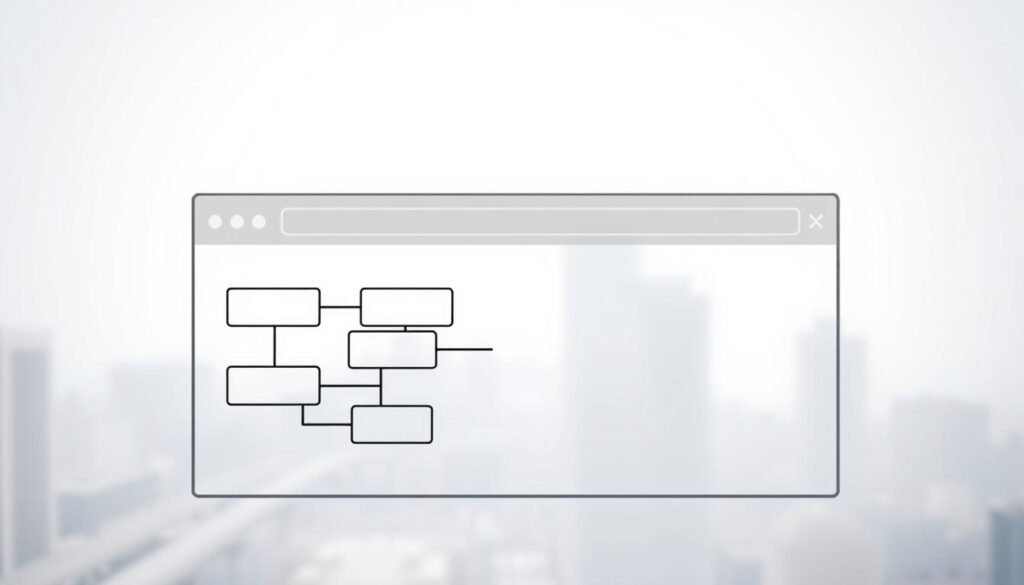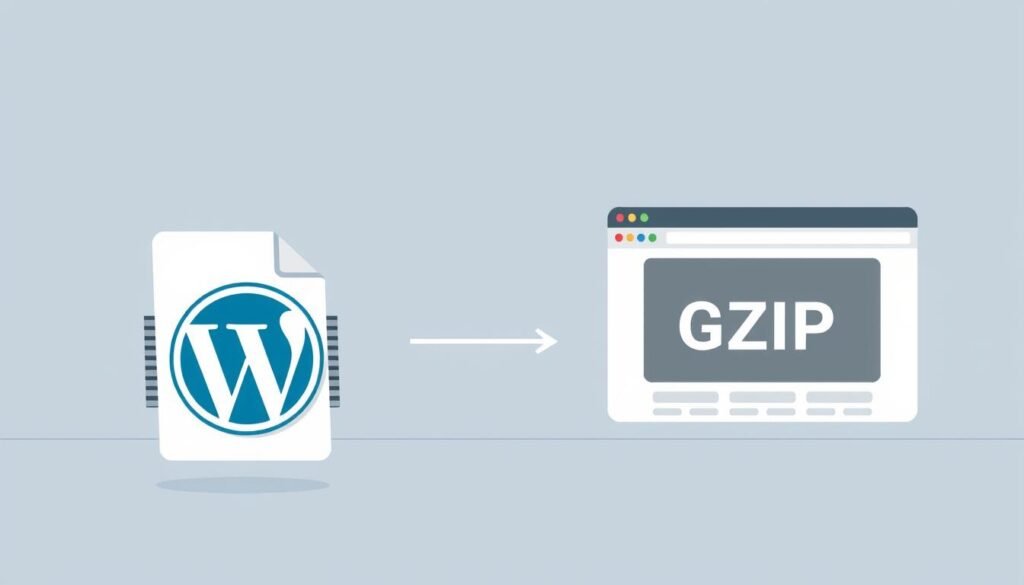We recall a late-night call from a university lab site that was slow during registration week. Students got impatient, and the registrar team saw fewer registrations. We found big images, an old host, and no caching.
After optimizing images, switching hosts, and adding caching, the site loaded in under two seconds. Registrations went back up.
This experience led us to help others improve website speed. We teach engineering pros, students, and teachers how to make WordPress sites faster.
Site speed is key for a good user experience. Google uses load time and Core Web Vitals in rankings. Aim for under two seconds for better site speed and visibility.
This article is a step-by-step guide. We cover image optimization, caching, and hosting tips. We also talk about monitoring and maintenance. For help or services, email info@consac.dev. Our advice comes from WordPress.com, WPBeginner, and WP Rocket.
Understanding WordPress Speed Optimization

WordPress Speed Optimization means making a website load faster. It involves server and front-end improvements. We aim for clear goals to measure success.
What is Website Speed?
Website speed is how fast content appears and becomes interactive. Important metrics are First Contentful Paint, Largest Contentful Paint, and Time to Interactive. These show if content loads quickly or if users wait.
WordPress pages are dynamic, built by PHP and MySQL. Caching turns these into static HTML. This reduces server work and speeds up page loads for returning visitors.
Why Speed Matters for Your Site
Users want fast pages. Mobile users leave if pages take over three seconds. This hurts engagement and sales.
Google uses Core Web Vitals to rank sites. Improving these metrics boosts our ranking. This leads to more visitors and better experiences.
Speed perception varies. Owners might think their site is fast, but users see different speeds. We test from various locations to ensure fast loading for everyone.
Choosing the right platform is key. WordPress.com handles many speed optimizations for us. Self-hosted WordPress requires careful choices for better performance.
Key takeaway: Set a goal like under two seconds for content. Use tools to measure, then make targeted improvements to speed up your site.
Common Factors Affecting Speed

We explore common reasons why WordPress sites slow down. Server limits, heavy code, oversized media, and third-party scripts all contribute to delays. By tackling these issues, we can make our sites faster and better for users.
Hosting Provider Impact
The hosting provider greatly affects your site’s speed. Shared hosting can face issues like noisy neighbors and CPU throttling. This makes it harder to improve WordPress speed.
Managed WordPress hosts like SiteGround and Bluehost offer better performance. They have optimized servers, caching, and automatic updates. These features help speed up your site without needing to be a tech expert.
Theme and Plugin Quality
Badly coded themes and too many plugins slow down sites. We choose simple, updated themes like Astra. Premium options from aThemes and Themify also help.
Plugins can also slow things down. We remove unused plugins and find efficient alternatives. Testing plugins on staging sites helps us optimize WordPress speed.
Image Sizes and Formats
Images often take up a lot of space. Serving large images without compression slows down pages. We resize images, use JPEG for photos, and PNG for graphics with transparency.
Using WebP can also help. WordPress.com’s CDN can serve WebP, saving space. Lazy-loading and scaled images reduce initial load times and improve speed on all devices.
Other factors to consider include external scripts and embeds, which can block rendering. Defer or lazy-load them. Database bloat from revisions and transient data also slows things down. Regular cleanup keeps things running smoothly.
| Factor | Typical Impact | Practical Fix |
|---|---|---|
| Hosting quality | High latency, slow TTFB | Move to managed WordPress hosting; choose closer server location or CDN |
| Theme and plugins | Longer render times, high memory use | Pick lightweight themes (Astra); audit and consolidate plugins |
| Images | Large page weight, slow loads | Resize, compress, use WebP, enable lazy-load |
| External scripts | Blocking requests, unpredictable delays | Defer or lazy-load embeds; remove nonessential widgets |
| Inefficient code & database | Increased CPU and query times | Refactor code, clean database, limit post revisions |
Choosing the Right Hosting Plan

Choosing the right hosting plan is key to a fast WordPress site. We focus on practical trade-offs to optimize website performance without guesswork.
Shared hosting is cost-effective. It’s great for small blogs and low-traffic sites. Resources like CPU, RAM, and disk I/O are shared with other sites.
During traffic spikes on a neighbor site, your site’s response times can increase. This can slow down page loads. For site owners, this unpredictability can hurt efforts to increase page speed.
Dedicated hosting offers isolated resources and predictable performance. You control CPU, memory, and storage I/O. This makes it ideal for high-traffic sites, large portfolios, and e-commerce stores.
Management overhead and cost are higher, but the payoff is measurable. Faster transactions and fewer timeouts are the benefits. When choosing, weigh cost against expected traffic and business risk.
For many teams, starting modest and moving up as traffic grows is the right path. This approach helps teams optimize website performance incrementally.
Shared vs. Dedicated Hosting
Shared plans are economical and easy to manage. They’re perfect for new sites. They often include cPanel, one-click installs, and basic backups.
Dedicated servers provide raw control. You can customize PHP versions, tailor caching, and access server logs directly. This control helps in WordPress Speed Optimization, with tuned PHP-FPM and fast storage like NVMe.
Managed WordPress Hosting Options
Managed WordPress hosts handle the platform layer. This lets us focus on content and features. Providers like SiteGround, WP Engine, Kinsta, and Bluehost deliver WordPress-tuned stacks, automatic updates, and server-level caching.
These tools often remove the need for third-party caching plugins. Managed plans include WebP conversion, CSS minification, and database optimization utilities. They also bundle CDN integration and automated backups scheduled during low-traffic windows.
| Hosting Type | Key Benefits | When to Choose |
|---|---|---|
| Shared Hosting | Low cost, simple setup, basic backups | Personal blogs, small portfolios, sites with low traffic |
| Dedicated Hosting | Isolated resources, predictable performance, full control | High-traffic sites, large stores, apps requiring custom tuning |
| Managed WordPress Hosting | WordPress-tuned stack, server caching, WebP, auto-updates, integrated CDN | Businesses wanting easy WordPress Speed Optimization and reduced ops |
Server location matters: pick data centers near your audience to reduce latency. Use the latest PHP versions to squeeze performance gains. Check backup policies and CDN support before you commit.
For most projects, starting with a reputable managed WordPress host is a fast path to boost site speed. We test and scale from there.
Optimizing Images for Faster Loading
We focus on image handling because media often drives page weight. Small changes in format, size, and delivery can make WordPress faster. These tactics help make websites load quicker without losing visual quality.
Best image formats for the web
Use JPEG for photos and complex scenes because it balances quality and size well. PNG is best for logos and icons that need transparency. WebP is the most efficient, reducing file size and supporting both lossy and lossless formats.
Compression and resizing workflow
Always resize images to the display size before uploading. Avoid using raw camera files as they slow down pages. Use lossy compression for images where quality loss is okay. Choose lossless for diagrams where every pixel is important.
Tools for image compression
Desktop tools like Adobe Photoshop, Affinity Photo, and GIMP are great for editing. Online tools like TinyPNG and Squoosh offer quick compression. WordPress plugins like ShortPixel, Imagify, Smush, and Jetpack Boost automate optimization and add lazy loading.
Delivery and responsiveness
Use responsive images with srcset to send the right size to each device. Lazy loading defers offscreen images, reducing initial page weight. CDN image services like Cloudflare Images or BunnyCDN offer on-the-fly resizing and caching for faster loading.
Measurement and iteration
After optimizing, run PageSpeed Insights and GTmetrix to check improvements. Track changes to keep WordPress speed up and loading times fast.
| Task | Recommended Format | Tool Options | Impact on Performance |
|---|---|---|---|
| Photographs | JPEG or WebP | Photoshop, Squoosh, ShortPixel | High: large file size reductions; faster loading times |
| Logos & Icons | PNG or SVG (when vector) | Affinity Photo, GIMP, SVG export tools | Medium: preserves clarity; helps optimize website performance |
| Transparent graphics | PNG or WebP (with alpha) | TinyPNG, Imagify, Smush | Medium: maintains transparency; can reduce file weight |
| Responsive delivery | Multiple sizes + srcset (WebP preferred) | BunnyCDN, Cloudflare Images, WordPress srcset handlers | High: serves optimal size per device to enhance loading speed |
| Bulk optimization | Batch compressed JPEG/WebP | ShortPixel, Imagify, Smush Pro | High: consistent savings sitewide; optimize WordPress speed |
Caching Techniques for WordPress

We help engineers, educators, and site owners understand caching. Caching saves prebuilt HTML or static assets. This makes the server work less, speeding up your site.
What is caching?
Caching saves HTML, images, and other assets. This way, the server doesn’t have to work as hard on each request. With the right setup, WordPress can be 2x–5x faster.
Server-level caching uses NGINX, Varnish, or Redis. Many hosts offer this by default. Plugins can also help if server support is lacking. Always test on a staging site before making changes live.
Top caching plugins to use
WP Rocket is a top choice with many features. WP Super Cache is free and reliable. SiteGround’s SG Optimizer is great for SiteGround hosting users. Jetpack Boost is good for sites with many plugins.
For busy sites, use a CDN and a web application firewall. This combo caches pages at the edge, reducing server load and speeding up your site worldwide.
Practical configuration tips
Don’t cache dynamic pages like cart and checkout. Set expiration times and purge rules for updates. Use object caches and opcode caching to speed up PHP.
Use tools like Google PageSpeed Insights and GTmetrix to measure your site’s speed. Track changes to see how caching improves your site.
Minimizing HTTP Requests

We focus on practical steps to reduce HTTP requests and improve website speed. Small changes in loading assets can make a big difference. This helps make your WordPress site faster for visitors.
How to Reduce Requests
First, use tools like GTmetrix or WebPageTest to check your site’s requests and size. Then, merge CSS and JavaScript files to cut down on round trips. This makes your site load faster.
Inline small critical CSS to stop it from blocking the page. Also, lazy-load noncritical assets so the browser asks for fewer files at first. This makes your site load faster.
Remove unused plugins and third-party scripts. Each one can add many requests. For JavaScript, defer nonessential scripts and add async where safe to avoid blocking.
Tools like WP Rocket and Jetpack Boost can help. They offer options to optimize WordPress speed without manual bundling.
Using Sprites for Images
Combine small icons and decorative images into one sprite sheet. This way, the browser fetches one file instead of many. Use CSS background positioning to show the correct segment.
This method can greatly reduce HTTP requests and make your site faster. It’s great for pages with many tiny assets.
For modern workflows, prefer inline SVG icons or icon fonts. Inline SVGs remove extra image requests and scale well on high-density displays. When allowed, host critical third-party assets locally to speed up first paint.
Audit external scripts regularly. Tracking pixels, chat widgets, and ad tags can slow things down. Load required third-party scripts asynchronously or defer execution.
Track the impact of each change with measurement tools. Aim to lower both request count and payload size. This will make your site load faster across devices.
Enabling GZIP Compression

We focus on making your site load faster by compressing assets. Turning on GZIP compression for WordPress can cut the size of files like HTML, CSS, and JavaScript by 50–70%. This makes pages load quicker, improves the Time to First Byte, and boosts performance on both mobile and desktop.
Compressing text files means less data is sent over the internet. This makes pages render faster and can lower your bandwidth costs. GZIP compression can significantly improve your WordPress site’s speed and search rankings.
Smaller responses are also beneficial for sites using a CDN or serving users worldwide. Brotli is another compression method that often beats GZIP for text files. We suggest using Brotli where possible, but keep GZIP as a backup.
How to enable compression on your server:
Many hosts like WP Engine and SiteGround turn on server compression by default. If not, add Apache mod_deflate rules to .htaccess or enable gzip in NGINX. Plugins like WP Rocket can also help you check and improve your site’s speed.
Don’t compress images or already-compressed files. Set cache-control headers to ensure compressed files are stored correctly. Use tools like browser devtools or curl to check if files are compressed and to see size improvements.
Validation and measurement:
PageSpeed Insights or GTmetrix can show if compression is working and its effect on load times. Use curl -I or online tools to check response headers. Chrome DevTools’ network analysis helps confirm compression and guides further optimization.
| Task | Recommended Action | Expected Impact |
|---|---|---|
| Enable server compression | Activate mod_deflate for Apache or gzip on for NGINX; enable Brotli if available | 50–70% smaller text payloads; faster Time to First Byte |
| Use CDN compression | Enable Brotli or GZIP at CDN edge (Cloudflare, Fastly, AWS CloudFront) | Better global delivery; additional gains for distant users |
| Exclude binary files | Configure MIME-type exclusions for images and archives | Avoid wasted CPU and negligible benefit from compressing already-compressed files |
| Verify and test | Use curl, PageSpeed Insights, GTmetrix, and browser devtools | Concrete proof of compression and measured transfer-size improvements |
| Use plugins for guidance | Install WP Rocket or similar to detect and report compression status | Simplifies setup and helps us speed up my website with less manual config |
Using Content Delivery Networks (CDNs)

We use networks of edge servers to serve static assets close to visitors. This method cuts down latency and reduces the load on the origin server. It also boosts site speed worldwide. A Content Delivery Network WordPress setup works well with server caching, reducing global TTFB and LCP.
What is a CDN?
A CDN is a system of edge servers that cache images, CSS, and JavaScript. When a user requests a resource, the CDN serves the closest copy. This lowers round-trip time, offloads the origin server, and increases page speed for distant visitors.
Top CDN options for WordPress
Cloudflare is a top choice with a free tier, integrated DNS, and a web application firewall. It adds security while boosting site speed. Amazon CloudFront offers tight AWS integration for teams using S3 and Lambda. BunnyCDN and Bunny Optimizer provide cost-effective edge delivery with robust image transformation and WebP support.
KeyCDN and StackPath offer simple origin-pull setups and global POP coverage. Many managed WordPress hosts and caching plugins include one-click integration with these providers. We recommend testing from multiple regions to see how a CDN can boost page speed for your audience.
To optimize WordPress speed with a CDN, ensure static assets are routed through the CDN. Set correct cache-control headers and enable Brotli or gzip where available. Combine CDN delivery with server caching and asset minification for the best results.
Beyond speed, CDNs like Cloudflare add DDoS mitigation and a WAF. They provide a security layer while optimizing WordPress speed. Practical checks include verifying origin pull settings and confirming image optimization paths for automatic resizing and format conversion.
Minifying CSS and JavaScript Files

We start by removing clutter: whitespace, comments, and redundant characters. This process makes files smaller, so browsers download less. Minifying CSS and JS reduces transfer time and speeds up page rendering.
Minification works well with other strategies like concatenation and critical asset loading. Combining files lowers HTTP requests. Inlining critical CSS and deferring noncritical JavaScript boosts page loading speed.
Why this step matters
Smaller files mean faster loading times. This improves both perceived and real performance. Pages with fewer, leaner assets tend to load faster and rank better.
Minification can change how scripts run or break dependencies. Always test on staging, clear caches, and keep rollback points. Use browser devtools and PageSpeed Insights to check if payload reductions work.
Best tools and workflows
For plugins, WP Rocket offers minify and concatenate options in its UI. SiteGround customers can use SG Optimizer for similar effects. Autoptimize and Fast Velocity Minify are great for flexible CSS and JS aggregation.
In development, we prefer build tools like webpack, gulp, and esbuild. These tools create production bundles with minification and tree-shaking. Jetpack Boost is good for simple projects needing critical CSS generation.
| Tool / Plugin | Primary Function | Best Use Case | Notes |
|---|---|---|---|
| WP Rocket | Minify, concatenate, cache | All-in-one optimization for WordPress | Easy UI; test on staging before enabling combine options |
| Autoptimize | Minify and aggregate CSS/JS/HTML | Sites needing fine-grained control | Pair with critical CSS for best results |
| Fast Velocity Minify | Concatenate and minify assets | Developers who want lightweight plugin | Offers exclusions to avoid breaking scripts |
| SG Optimizer | Minify, combine, caching for SiteGround | SiteGround-hosted WordPress installs | Integrates with server-level rules for speed |
| webpack / gulp / esbuild | Build-tool minification and bundling | Modern development workflows and CI/CD | Automates minify CSS and JS during deployment |
| Jetpack Boost | Critical CSS and performance helpers | Simple sites looking for CSS optimization | Limited JS minification; useful for perceived speed |
Automate minification in your CI/CD pipeline for every release. After deployment, check network waterfall charts and PageSpeed Insights to verify gains. These practices help optimize WordPress speed, improve website speed, and enhance loading speed for users.
Monitoring Website Speed
We keep an eye on how fast our websites are all the time. Simple checks show us trends, alerts warn us of problems, and reports help us make choices. To really keep an eye on website speed, use lab tools and field data together. Make it a habit to check your website’s speed regularly.
Tools for Measuring Speed
We use Google PageSpeed Insights for lab data and Chrome UX Report for field metrics. GTmetrix gives us a quick summary and tips. WebPageTest shows us a detailed waterfall to find out what’s slowing us down.
For WordPress sites, we use tests built into hosting panels or plugins. Real User Monitoring (RUM) gives us a full picture. Google Analytics Core Web Vitals reports, New Relic, and Pingdom help us see how visitors experience our site. We use both RUM and synthetic checks to make sure we’re speeding up our website correctly.
What to Measure
We focus on Core Web Vitals: LCP, CLS, and FID/INP. We also track Time to First Byte, total page weight, and HTTP requests. It’s important to measure mobile and desktop speeds separately. We also track metrics related to conversions to see how speed affects our business.
Setting Benchmarks for Performance
We set a baseline before we start optimizing. We aim for a full load time under 2 seconds and meet Core Web Vitals standards. We schedule automated tests weekly and RUM reviews monthly to keep improving page speed.
We set alerts for any slowdowns after updates or big changes. Keeping a changelog helps us see how updates affect our site’s speed. We use A/B testing to fine-tune for conversions while we work on speeding up our website.
Improving website performance is an ongoing process. We run audits after big changes, check our fixes, and adjust our priorities. By using metrics, alerts, and regular checks, we can keep our website fast and improve it continuously.
Regular Maintenance for Continued Optimization
Keeping your website running smoothly is key. We do small tasks often to keep things running well. Before making changes, we test them in a safe area to avoid problems.
Updating Plugins and Themes
It’s important to keep your WordPress, themes, and plugins up to date. This ensures your site is fast and secure. We focus on updates that improve speed and security.
Cleaning the Database
Too much data in your database can slow things down. We remove unwanted data and clean up unused stuff. This makes your site faster and easier to manage.
We also manage tasks that use a lot of resources. This way, your site stays fast and efficient. For help with making your site faster, contact info@consac.dev.

